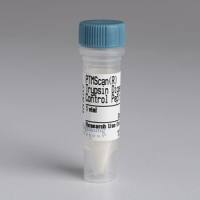Functional Defect Conferred by the Parkinson Disease-Causing Synuclein
The association of missense mutations in the α-synuclein gene to heritable Parkinson’s diesease (PD) indicates that dysfunction of normal α-synuclein metabolism, or novel gain-of-functions by the mutant peptides, can elicit early-onset PD (1 ,2 ). The accumulation of α-synuclein in nerve cell Lewy bodies of the common sporadic PD suggests a wider role for α-synuclein in the development of PD (3 ). However, investigations into the loss and gain of functions caused by the specific mutations have been sparse, although an increased fibrillogenic potential have been reported (4 ,5 ). We have shown that a fraction of α-synuclein is moved by fast axonal transport to the synaptic terminus (6 ,7 ). Fast axonal transport is mediated by the motor-driven movement of vesicular structures along microtubules. By studying the interaction between α-synuclein and brain vesicles we discovered that the Ala30Pro mutation inhibits the interaction between mutant a-synuclein and brain vesicles (6 ). Hypothetically, this inhibitory effect could perturb the fast axonal transport of α-synuclein thus increasing its concentration in the cell body where it may aggregate into Lewy bodies. The technique described in this chapter is modified from Brown & Rose (8 ) and allows the study of interactions between α-synuclein and brain vesicles and therefore the functional effects of pathogenic point mutations or deletions of specific domains. Information on the following points can be found in Jensen et al. (6 ,9 ) and references therein: (1) Mutagenesis, expression, and purification of recombinant human α-synucleins and (2) methodology for performing sodium dodecyl sulfate (SDS) gel electrophoresis and electroblotting.
![预览]()






